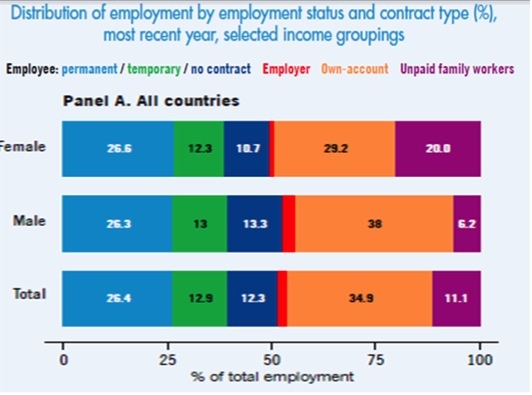29 May, 2015Recent reports from both the ILO and the OECD reveal a shift from the standard employment model to an increased use of precarious work. This is linked to a rise in income inequality.
Both the Organization for Economic Cooperation and Development’s (OECD) report, In It Together: Why Less Inequality Benefits All and the International Labour Organization’s (ILO) 2015 World Employment Social Outlook call on governments to take measures to fight increasing inequalities. The OECD highlights that such inequality is a threat to economic growth and encourages its members to enhance job quality and tackle inequality. The ILO is urging policymakers to extend labour rights and social security to workers in less secure forms of employment.
“Employment patterns have changed considerably over the past decade. Full-time, stable employment contracts represent less than one in four jobs and that statistic is not improving noticeably. […] Furthermore, the rise in informal employment, undeclared and temporary work arrangements, as well as involuntary part-time work, has contributed to the widening of income inequalities, which have been recorded in the majority of countries over the past two decades.”, Guy Ryder, ILO Director General
Both reports say that income inequality has increased since 2000. This trend has been aggravated by the expansion of precarious work.
The OECD report shows that today non-standard work (temporary, part-time and self-employed all together) represents one-third of employment in OECD countries. Since the mid-1990s more than half of all job creation in OECD member states has been in non-standard work. More alarming is the figure presented by the ILO’s World Employment Social Outlook: fewer than 40 per cent of wage and salaried workers are employed on a full-time, permanent basis and even that share appears to be declining. More than six out of every ten wage and salaried workers worldwide are in either part-time or temporary forms of employment. Women and young people represent a large share of these precarious workers.
Besides job insecurity, precarious workers experience lower wages and limited training opportunities. Poverty rates are higher among temporary and self-employed workers and an increased number of workers have access to low quality jobs. The OECD reports shows that precarious work can become a trap notably for part-time and self-employed workers. The report contradicts the claim of temporary work agencies that temporary work is a stepping-stone towards permanent employment. Instead, it states that in many countries younger workers, especially those with temporary work contracts, have a lower chance of moving on to more stable jobs.
